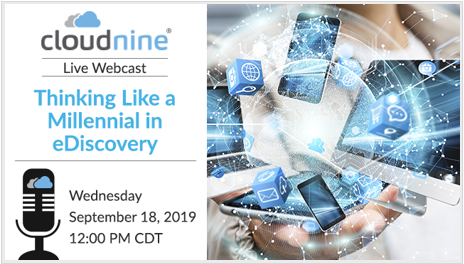DOS and DON’TS of a 30(b)(6) Witness Deposition, Part Four
Editor’s Note: Tom O’Connor is a nationally known consultant, speaker, and writer in the field of computerized litigation support systems. He has also been a great addition to our webinar program, participating with me on several recent webinars. Tom has also written several terrific informational overview series for CloudNine, including his most recent one, What is the Future of the Legal Technology Conference? Now, Tom has written another terrific overview regarding the state of legal technology conferences titled DOS and DON’TS of a 30(b)(6) Witness Deposition that we’re happy to share on the eDiscovery Daily blog. Enjoy! – Doug
Tom’s overview is split into six parts, so we’ll cover each part separately. The first part was last Monday, the second part was last Wednesday and the third part was last Friday, here’s the fourth part.
Common Mistakes
Here are some of the common mistakes associated with preparation for 30(b)(6) witness depositions:
Failure to Thoroughly Review the Deposition Notice
The rule requires that it describe the matters for examination with reasonable particularity. Thus, the witness need be prepared only for what is described. The deposing party may ask a witness questions that are outside the scope of the matters for examination but counsel for the deponent should be prepared to object and make clear that any answers provided are not binding on their client.
Designating the Wrong Representative or Failing to Designate Multiple Representatives
30(b)(6) requires that the organization “designate one or more officers, directors, or managing agents, or designate other persons who consent to testify on its behalf.” In addition, the organization may set out the matters on which each person designated will testify and note that testimony is limited in scope to the issues of which they have personal knowledge.
If the potential witness does not have such personal knowledge it may be better to designate another witness or use multiple witnesses to discuss specific matters. The point is that the party upon whom the notice or subpoena is served is required to designate which individual or individuals are appropriate to testify on which topics.
Because testimony generated during a deposition has the potential to be admitted into evidence at trial, a witness testifying about a subject outside his or her direct knowledge could lead to damaging testimony at trial. Costly delays from resolving these issues at trial are one factor in the proposed rule changes discussed above.
Inadequate Preparation of Witness
Rule 30(b)(6) requires that a corporation do more than merely gather documents and produce a witness with general knowledge about the issues in the case. It must produce a witness who has been prepared.
But the rule does not require perfection; the mere fact that a witness can not answer every question on a certain topic does not mean that the corporation failed to comply with its obligation.
Still, the duty is significant and has even been described by one court as “onerous.” because, in the words of the Court, “… we are not aware of any less onerous means of assuring that the position of a corporation, that is involved in litigation, can be fully and fairly explored.” Prokosch v. Catalina Lighting Inc., 193 F.R.D. 633, 638. (D. Minn. 2000)
We’ll publish Part 5 – Specific Strategies to Consider – on Wednesday.
So, what do you think? Have you ever been a 30(b)(6) deponent? Or been involved in preparing one for testimony? As always, please share any comments you might have or if you’d like to know more about a particular topic.

Sponsor: This blog is sponsored by CloudNine, which is a data and legal discovery technology company with proven expertise in simplifying and automating the discovery of data for audits, investigations, and litigation. Used by legal and business customers worldwide including more than 50 of the top 250 Am Law firms and many of the world’s leading corporations, CloudNine’s eDiscovery automation software and services help customers gain insight and intelligence on electronic data.
Disclaimer: The views represented herein are exclusively the views of the author, and do not necessarily represent the views held by CloudNine. eDiscovery Daily is made available by CloudNine solely for educational purposes to provide general information about general eDiscovery principles and not to provide specific legal advice applicable to any particular circumstance. eDiscovery Daily should not be used as a substitute for competent legal advice from a lawyer you have retained and who has agreed to represent you.







